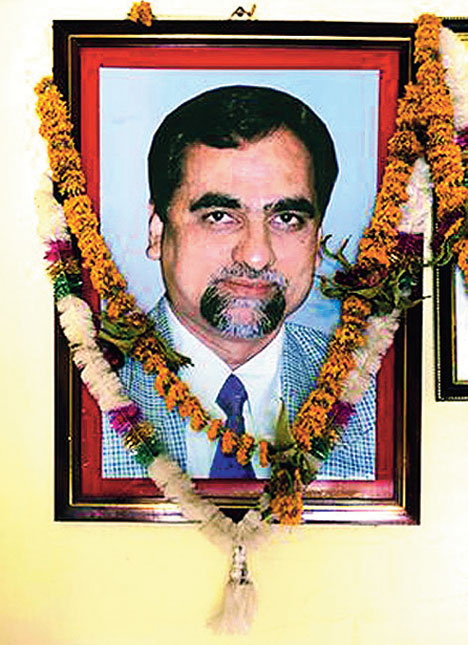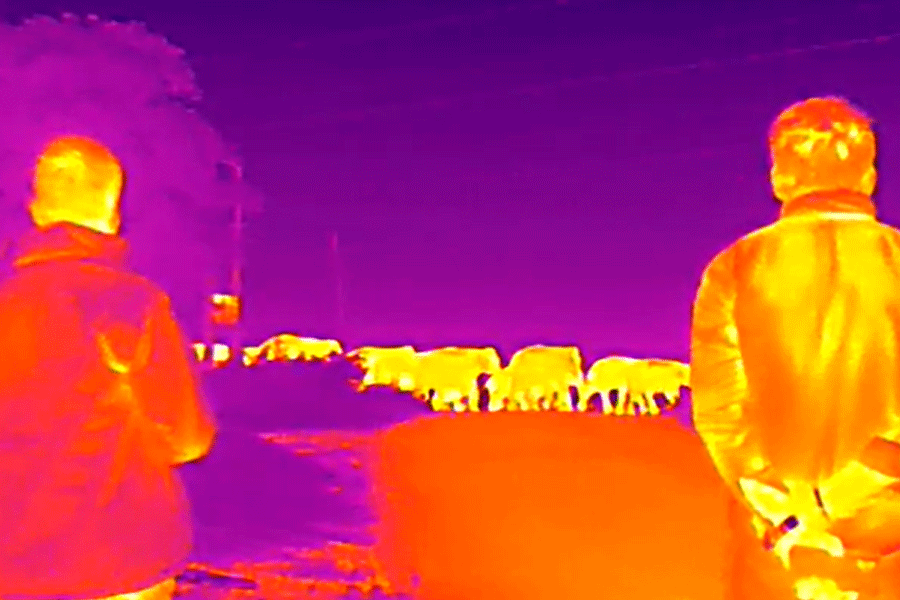
New Delhi: Electrical engineer Arjun Arunachalam, 38, believes his dream of building a new, fast, portable magnetic resonance imaging scanner is moving close to fruition, after a decade of effort punctuated by periods of frustration.
His prototype scanner, assembled on the first floor of the Sri Sathya Sai Institute of Higher Medical Sciences, Bangalore, now awaits human trials in which doctors will compare its images with those from standard MRI scanners.
Radiologists who have watched the scanner take shape have been told the device could be prepared for use in only two hours to provide on-site MRI scans, currently unavailable to people in small towns and villages.
Doctors familiar with commercial MRI scanners, which take a week to be made functional if fully turned off, find the two-hour switch-on feature the prototype promises fascinating.
For, this translates into portability, making the device a mobile MRI scanner. And as important as this mobility, they say, is the speed at which the prototype generates images, which is three to four times faster than the fastest scanners in the market.
"When I first heard about it, I thought it was impossible," said Bhavana Nagabhushana Reddy, a radiologist at the Sathya Sai Institute.
"We've always viewed MRI machines as stationary, not something that could be driven from one place to another."
Imaging specialists say the prototype, if proved as reliable as commercial scanners, represents a potentially disruptive technology for the existing MRI industry.
"If it works, it would be a breakthrough," said Kunnummal Mohanan, professor of radiology at the MES Medical College in Kerala and president of the Indian Society of Radiology and Imaging, who has not yet seen the prototype.
The prototype has arrived after what Arunachalam views as a struggle against scepticism from industry and indifference from academia.
His experience underscores how innovative proposals may sometimes face resistance from entrenched business interests and might need faith-driven support from well-wishers with deep pockets.
In 2008, Arunachalam was a staff engineer at the General Electric Research Laboratory in Schennectady in New York, tasked with finding ways of accelerating image acquisition for MRI scans and examining alternative designs for scanner subsystems.
The Schennectady lab had given birth to modern MRI scanners. There in 1982, General Electric scientist John Schenk, a medical doctor with a PhD in physics, placed himself inside a makeshift machine to take a "brain selfie", the first MRI scan with a 1.5-Tesla magnet girdled by a field 30,000 times stronger than the earth's magnetic field.
The 1.5-Tesla magnet became the industry standard for MRI. A General Electric publication in 2015 estimated that there were some 22,000 1.5-Tesla MRI machines worldwide providing 80 million scans every year.
Unlike computerised tomography (CT) scans that use X-rays for imaging and carry a small risk of radiation exposure, MRI scans rely on the interaction of magnetic fields with protons in the body and pose no radiation risk.
MRI scans are particularly useful in imaging soft tissues, including moving organs such as the heart. MRI machines use super-conducting magnets based on liquid helium cooled to temperatures a whisker above absolute zero.
Arunachalam wondered if he could use software innovations to speed up the image extraction process. The relatively long speed for image generation limits the number of scans that machines can do in a day. They also complicate the process of imaging moving organs such as the heart or the lungs.
But Arunachalam's idea - nascent at the time - evoked little interest from his superiors. He quit General Electric and joined IIT Mumbai in 2010 as an assistant professor of electrical engineering, hoping academia would provide him the flexibility and funds to pursue novel ideas.
He found radiologists willing to collaborate with him but his own colleagues appeared unenthusiastic. He recalls being told to "stick to" conventional research and abandon his ideas of trying to tinker with MRI.
His decision to quit the institute in 2013, he says, was possible only through the support and encouragement of his wife, Nivedita Nadkarni. The couple had met while they were pursuing their PhDs at the University of Wisconsin in the US, he in electrical engineering and she in statistics.
Nadkarni had been offered a faculty position at a medical school in Singapore, and both felt the move would allow Arunachalam to pursue his ideas on his own there.
He published scientific papers on accelerated data acquisition techniques and filed patents in India, Europe and the US to protect his intellectual property.
In the autumn of 2015, he approached General Electric's research lab in Bangalore, again hoping he would be able to persuade the company to take up his idea to build faster MRI scanners.
"I tried for three months, but it didn't work," Arunachalam said.
Technology analysts aren't surprised. "Big corporations with big markets may not always welcome innovation that has the potential to disrupt their own business," said a senior official in India's Council of Scientific and Industrial Research, who has tracked technology programmes for three decades and requested anonymity.
Arunachalam looked for alternative support and in March 2016 found it from the Tata Trusts' Foundation for Innovation and Social Entrepreneurship (FISE).
The Indo-US Science and Technology Forum, a programme funded by the Indian and American governments to support novel and promising ideas, also agreed to support the development by providing a grant of about Rs 2 crore.
Arunachalam subsequently founded Voxelgrids Innovations, a FISE-portfolio start-up, and put together a team of engineers with complementary skills.
Shankar Murthy Udupa handled the mechanical engineering aspects of the scanner, Sairamesh Raghuraman designed the radio-frequency sub-systems, and Swathy Padarthi worked on other critical hardware and software aspects.
The team has spent the past two years building the prototype scanner, which also uses an alternative cooling strategy - not just the typical convection used in commercial scanners - that allows the machine to be turned off and on in two hours.
"The existing scanners, when turned off, lose all their liquid helium. This makes the turn-off and turn-on process quite expensive and time-consuming," Arunachalam said.
FISE last month said the new scanner was compact and lightweight and could be used for scans in rural areas, even in primary health centres. The new machine is expected to cost significantly less than the commercial scanners.
But a portable scanner could be of little use given India's shortage of radiologists. Some doctors estimate that India has less than 10,000 radiologists, and all of them are clustered in large cities and towns.
However, Tata Trusts' senior adviser and head of innovation, Manoj Kumar, says the portable scanner could work through a "hub-and-spoke" architecture. In this arrangement, images captured by the machine at remote locations bereft of radiologists could be transmitted to a city - the hub - for radiologists to scan them and dictate their impressions.
For now, everyone is waiting for the go-ahead for human studies. But analysts caution that commercialisation is likely to demand significant additional work.
"An MRI machine is a complex system with multiple technologies around the core hardware," the senior CSIR official said. "Successful commercialisation will require all such peripheral technologies, through partnerships and effective marketing."











